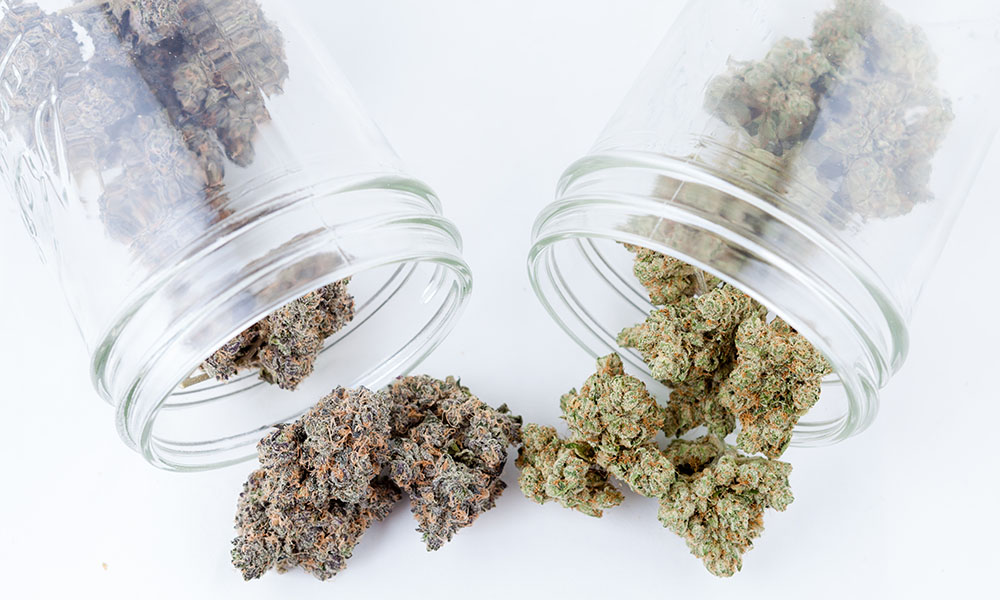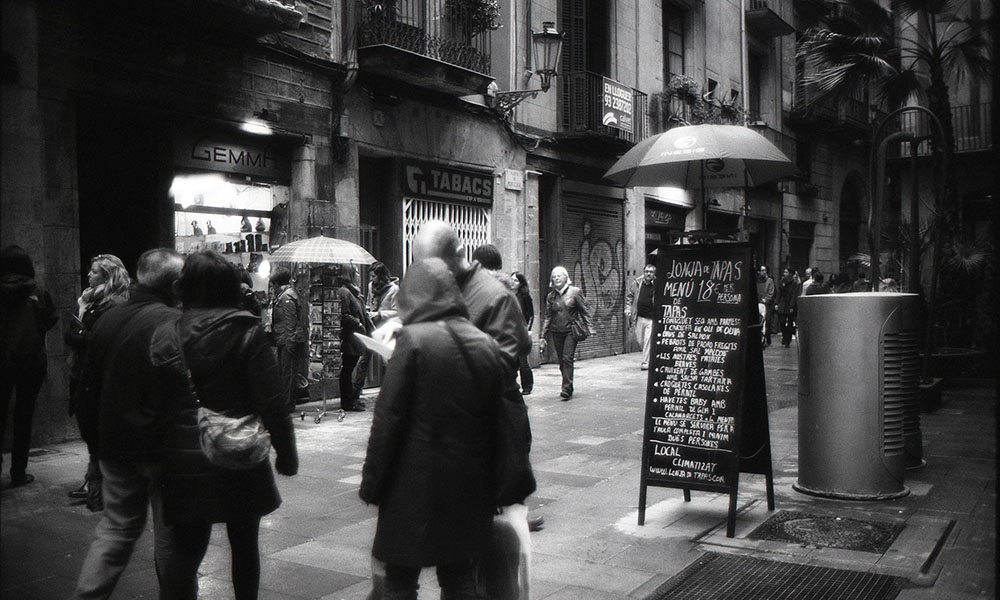
Industry Events
An American at Spannabis: We’re Doing It Wrong
California isn’t so special at all in the worldwide marijuana scene, except as a place where authorities still act like cannabis is something to worry about.
American exceptionalism is justified. The United States really is a special place, I found myself thinking, as I watched a U.S. Customs officer welcome me back to my secure homeland by tossing my suitcase at the Oakland International Airport last week.
The USA was the third country (and, not to brag, but the third continent!) I’d visited in the span of a few days. And it was the only place where any authority figure appeared to be the least bit concerned with what I had in my luggage, be it forbidden Spanish ham, anything resembling a weapon, or a little bit of weed. Of those three, I had the first and the last. I could see maybe some legitimate fears about the illicit deliciousness of jamon iberico. (Don’t @ me, vegans; I already dealt with you face-to-face at the Boqueria Mercado.)
But if nobody in Spain or Morocco cared about a few grams of cannabis, almost all of which originated in California — and they most certainly did not, and also did not appear the least bit interested in whatever else I might have in my pockets — why should this be an issue in Oakland, California?
But let’s take a step back. Until then, I’d been disabused of what I knew. America is in fact not so special. Neither is California. To crib a line from Vincent Vega, other places have what we have. Almost all of it. Except there in Europe, it’s just a little different, except when it’s better.
Spannabis, the self-described largest cannabis convocation in Western Europe, takes place in Barcelona during the second weekend in March. On first glance, Spannabis looks like most other cannabis expositions you see in America. There are booths, lots of them. There are stoned people, even more of them. There is a stage with musical acts, and another stage, generally far less popular, where panels of nerds and wonks and businesspeople talk about nerdy, wonky and profitable things.
There aren’t pounds and pounds of cannabis and tens of thousands of dollars’ worth of seeds openly sold at booths like there was at December’s Emerald Cup, but you don’t have to look too hard to find any cannabis. (And what you do find is generally pretty damn good, even for a spoiled northern Californian with his terpene-sniffing nose stuck pompously up in the air.)
The point, though, is that this is all taking place in Europe, where most of this isn’t supposed to be legal. In Spain at least, by the letter of the law, much of it is not. Yet in other countries, increasingly, cannabis is legal and even when it’s not, as is the case in Barcelona, nobody really seems to care. It’s just not a big deal — which, for someone coming from America and especially someone coming from just-legalized California, where, somehow, nothing about a 20-year-old industry can ever be simple or easy — is a huge deal indeed.
I had time to mull this over in detail well before entering Spannabis’s gates. Arriving in Barcelona late one midweek night, I mentioned to my Airbnb host what I was doing and why I was there. I’m not sure what I expected. Interest? Concern? Jealousy because “I’m from California, man,” and everybody should be envious of all the earthly delights in our earthly garden of Eden? What I got was polite disinterest. I was there for cannabis? Yeah, that’s cool, Barcelona has that. In fact, there was a cannabis club right around the corner. “I can smell it,” my host said, smiling, before moving on to another subject.
A few words on Barcelona and its cannabis club scene, which, by all metrics, has got to be bigger and better than anything you experience in Amsterdam. That fact, in turn, means it’s the biggest and best marijuana social-club scene in the world, because “a place where adults can gather and sit and smoke weed” is a concept we Americans appear incapable of mastering.
The morning after my arrival, still jet-lagged and utterly confounded by the mixture of Castilian Spanish and Catalan — neither of which bear any resemblance to taqueria Spanish, I was unhappy to discover — I found myself sitting at a cafe table, sipping an espresso, sharing spliffs with people from at least four different countries in what felt to me like a NATO meeting with weed.

I never found a definitive tally — you could say I was overwhelmed by the local sentiment and decided that it didn’t really matter — but some estimates, there are as many as 150 to 200 cannabis clubs in Barcelona. That feels high, even in a city of almost 2 million people, some of whom are legitimate marijuana refugees, fleeing the police in Putin’s Russia, but I had no way of verifying and I exhausted my limit to personally test the theory out at a total of six.
At any rate, all you need to know is that the clubs are awesome. They are relaxed. They serve food and coffee and beer and wine and water. They let you in and leave you alone. I guess they’re not really legal, which is why they don’t advertise (except on the internet), why there is very little signage (except for the few times when there was, a placard saying “CANNABIS” next to the charcuterie shop and the tapas bar), and why they charge you a nominal membership fee and ask to see your ID and swipe a little card or fob every time you enter.
Whatever. Details. The weed is good, the company is good. Why can’t we have this in the states, exactly?
“It’s a good fookin scene, man,” a young gentleman wearing a tracksuit and speaking with a Conor MacGregor-like brogue was telling me into one ear, as I tried to catch snippets of conversation from the table of French people in the other. Next to him were some brothers from England, next to them was another guy — Dutch? Swedish? I couldn’t tell.
I announced I was from California, as one does, and I was welcomed with some polite smiles and knowing nods. But that was it. One guy had been to Chalice, the California dab festival that for some surely logical reason is held in the middle of the desert at the height of summer. Other than that, my provenance generated about as much interest as the top-shelf I’d smuggled into the country to use as a conversation starter and bartering tool.
Nobody really cared about the U.S., or California, or its $7 billion or however many zeroes following a numeral-a-year cannabis industry — which, after a diet of years’ worth of American weed industry Kool-Aid, was a necessary refreshment. We mattered not much at all, except as a curio. “Yeah, that’s cool, man,” the line generally went. “But what’s up with all the guns you have in America?”
As it happens, American cannabis owes more to the Europeans than most of us would like to admit. The medical researcher who first discovered that THC shrinks tumors is based in Madrid. Whenever there’s talk of finally opening up a business where adults can sit and smoke cannabis, it is referred to as an “Amsterdam-style” café. Here are ancient seedbanks — and here’s one in Putin’s Russia, run by Red Army veterans — here are grow companies, here are researchers and activists.
The big difference is that Europe does still feel like a pre-commercialized industry, while at the same time featuring a ceiling much, much higher than our own. Germany’s national government just legalized medical marijuana. Germans are importing cannabis oil and flower from Canada.
We should be doing all that. We should have all this. But we don’t. It would be nice and easy to blame it all on the mushy supermarket apricot we have in the White House and the white nationalists and war hawks he put in charge of our foreign policy and law enforcement, but the truth is that you can find California Democrats who would look at everything I described above with trepidation — and you can find them in Congress.
Why, exactly? Just what is the big deal? Watered-down versions of that query toggled through my brain back at the Oakland airport as the Customs officer pulled out dirty t-shirts, balls of socks, paperback books and old receipts and dumped them onto a metal table.
It took a while, but he’d found it all: the gram bags from the Barcelona cannabis club I’d forgotten about, my vaporizer, and the few grams of California-grown that I’d brought back with me, after deciding that throwing away $20 worth of perfectly good weed would be wasteful. (He did not find the jamon iberico, I am relieved to announce, and thank the weed for that.)
He gathered it all — vape, glass jar, tiny baggies — into a plastic shopping bag. Grabbing my passport, he went to sit in front of a nearby desktop computer. He punched in some information. He waited. I waited.
He seemed to sigh, and then walked back to the table, bag in hand. He set the bag down on front of me. He looked at me like a parent looks at a child who has paint chips on his breath. He was letting me go, he said, but not without a clear directive to never do this again. “This was really, really stupid,” he told me.
Yes, I thought to myself as I repacked my bags and trudged over to BART. Yes, it really, really is. The sooner it ends, and the sooner the U.S. rejoins the rest of the more-civilized world, the better.
TELL US, have you ever experienced cannabis on an international trip?




























